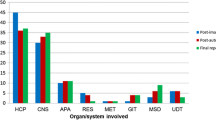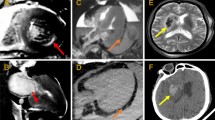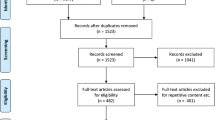Abstract
For the past century, autopsy techniques in clinical pathology have not changed significantly, while autopsy rates are declining. Modern imaging techniques offer interesting prospects of supportive post-mortem diagnostic investigation. In a prospective study of 29 autopsy cases, complimentary virtual autopsy using unenhanced post-mortem computed tomography (pmCT) was performed. We analysed in a prospective cohort study 29 unenhanced pmCT scans, generated prior to autopsy. Clinical information regarding clinical history and circumstances of death were provided. The objective of the study was to find consistency and/or discrepancy between virtual autopsy and conventional autopsy findings regarding cause of death and death-related diagnoses, reconstruction of the pathogenetic mechanisms involved, side diagnoses and CPR (cardiopulmonary resuscitation)- or death-related post-mortem changes. Accuracy of pmCT for cause of death was 68 % and the positive predictive value (PPV) was 75 %. Regarding the pathogenetic mechanisms, accuracy of pmCT was 21 % and PPV was 29 %. The combined diagnostic yield of autopsy and pmCT was 133 % compared to autopsy only. Modern imaging techniques give an opportunity for post-mortem diagnostics to complete but not yet replace traditional autopsy. We could show that in two out of three cases, the cause of death found by pmCT matched the diagnosis from classical autopsy. While both disciplines, pathology and radiology, will profit from the mutual exchange of data, it seems a realistic aim to strive for virtual autopsy possibly further supported by biopsies and contrast-enhanced pmCT as an alternative to the classical clinical autopsy. A combination of both methods enhances diagnostic quality and completeness of the autopsy report.


Similar content being viewed by others
References
Horowitz RE, Naritoku WY (2007) The autopsy as a performance measure and teaching tool. Hum Pathol 38:688–695
Krukemeyer MG, Driesch C, Dankof A, Krenn V, Hansen D, Dietel M (2007) Necessity of increasing autopsy frequency following the introduction of DRGs. Pathologe 28:294–298
Brinkmann B, Du CA, Vennemann B (2002) Recent data for frequency of autopsy in Germany. Dtsch Med Wochenschr 127:791–795
Chariot P, Witt K, Pautot V, Porcher R, Thomas G, Zafrani ES, Lemaire F (2000) Declining autopsy rate in a French hospital: physician's attitudes to the autopsy and use of autopsy material in research publications. Arch Pathol Lab Med 124:739–745
Lindstrom P, Janzon L, Sternby NH (1997) Declining autopsy rate in Sweden: a study of causes and consequences in Malmo, Sweden. J Intern Med 242:157–165
Start RD, McCulloch TA, Benbow EW, Lauder I, Underwood JC (1993) Clinical necropsy rates during the 1980s: the continued decline. J Pathol 171:63–66
Harrington DE, Sayre EA (2010) Managed care and measuring medical outcomes: did the rise of HMOs contribute to the fall in the autopsy rate? Soc Sci Med 70:191–198
Anon. (2004) The decline of the hospital autopsy: a safety and quality issue for healthcare in Australia. Med J Aust 180:281–285
Ishiko T (1989) Decline of autopsy rates in Japan and the significance of autopsy in gastric carcinoma. Gan To Kagaku Ryoho 16:1920–1924
Burton JL, Underwood J (2007) Clinical, educational, and epidemiological value of autopsy. Lancet 369:1471–1480
Persson A, Jackowski C, Engstrom E, Zachrisson H (2008) Advances of dual source, dual-energy imaging in postmortem CT. Eur J Radiol 68:446–455
Rutty GN (2007) Are autopsies necessary? The role of computed tomography as a possible alternative to invasive autopsies. Rechtsmedizin 17:21–28
Woodward PJ, Sohaey R, Harris DP, Jackson GM, Klatt EC, Alexander AL, Kennedy A (1997) Postmortem fetal MR imaging: comparison with findings at autopsy. AJR Am J Roentgenol 168:41–46
O'Donnell C, Woodford N (2008) Post-mortem radiology—a new sub-speciality? Clin Radiol 63:1189–1194
Shiotani S, Kohno M, Ohashi N, Yamazaki K, Nakayama H, Ito Y, Kaga K, Ebashi T, Itai Y (2002) Hyperattenuating aortic wall on postmortem computed tomography (PMCT). Radiat Med 20:201–206
Wichmann D, Obbelode F, Vogel H, Hoepker WW, Nierhaus A, Braune S, Sauter G, Pueschel K, Kluge S (2012) Virtual autopsy as an alternative to traditional medical autopsy in the intensive care unit: a prospective cohort study. Ann Intern Med 156:123–130
Weustink AC, Hunink MG, van Dijke CF, Renken NS, Krestin GP, Oosterhuis JW (2009) Minimally invasive autopsy: an alternative to conventional autopsy? Radiology 250:897–904
Stawicki SP, Gracias VH, Schrag SP, Martin ND, Dean AJ, Hoey BA (2008) The dead continue to teach the living: examining the role of computed tomography and magnetic resonance imaging in the setting of postmortem examinations. J Surg Educ 65:200–205
Ikeda G, Yamamoto R, Suzuki M, Ishikawa H, Kikuchi K, Shiotani S (2007) Postmortem computed tomography and magnetic resonance imaging in a case of terminal-stage small cell lung cancer: an experience of autopsy imaging in tumor-related death. Radiat Med 25:84–87
Thali MJ, Yen K, Schweitzer W, Vock P, Boesch C, Ozdoba C, Schroth G, Ith M, Sonnenschein M, Doernhoefer T, Scheurer E, Plattner T, Dirnhofer R (2003) Virtopsy, a new imaging horizon in forensic pathology: virtual autopsy by postmortem multislice computed tomography (MSCT) and magnetic resonance imaging (MRI)—a feasibility study. J Forensic Sci 48:386–403
Roberts IS, Benamore RE, Benbow EW, Lee SH, Harris JN, Jackson A, Mallett S, Patankar T, Peebles C, Roobottom C, Traill ZC (2012) Post-mortem imaging as an alternative to autopsy in the diagnosis of adult deaths: a validation study. Lancet 379:136–142
Jackowski C, Schweitzer W, Thali M, Yen K, Aghayev E, Sonnenschein M, Vock P, Dirnhofer R (2005) Virtopsy: postmortem imaging of the human heart in situ using MSCT and MRI. Forensic Sci Int 149:11–23
Pflederer T, Marwan M, Schepis T, Ropers D, Seltmann M, Muschiol G, Daniel WG, Achenbach S (2010) Characterization of culprit lesions in acute coronary syndromes using coronary dual-source CT angiography. Atherosclerosis 211:437–444
Shiotani S, Kohno M, Ohashi N, Yamazaki K, Nakayama H, Watanabe K, Oyake Y, Itai Y (2004) Non-traumatic postmortem computed tomographic (PMCT) findings of the lung. Forensic Sci Int 139:39–48
Lubner M, Menias C, Rucker C, Bhalla S, Peterson CM, Wang L, Gratz B (2007) Blood in the belly: CT findings of hemoperitoneum. Radiographics 27:109–125
Germerott T, Preiss US, Ebert LC, Ruder TD, Ross S, Flach PM, Ampanozi G, Filograna L, Thali MJ (2010) A new approach in virtopsy: postmortem ventilation in multislice computed tomography. Leg Med (Tokyo) 12:276–279
Acknowledgments
The authors would like to thank Bernd Sellhaus, Marc Britz and Wim Haas.
Disclosures
None.
Conflict of interest
The authors declare that they have no conflict of interest.
Author information
Authors and Affiliations
Corresponding author
Electronic supplementary material
Below is the link to the electronic supplementary material.
Supplementary Table 1
Results of pmCT vs. classical autopsy (items 1–4) per case (DOC 169 kb)
Supplementary Table 2
Side diagnoses of classical autopsy vs. pmCT (item 5) (DOC 78 kb)
Rights and permissions
About this article
Cite this article
Westphal, S.E., Apitzsch, J., Penzkofer, T. et al. Virtual CT autopsy in clinical pathology: feasibility in clinical autopsies. Virchows Arch 461, 211–219 (2012). https://doi.org/10.1007/s00428-012-1257-4
Received:
Revised:
Accepted:
Published:
Issue Date:
DOI: https://doi.org/10.1007/s00428-012-1257-4




